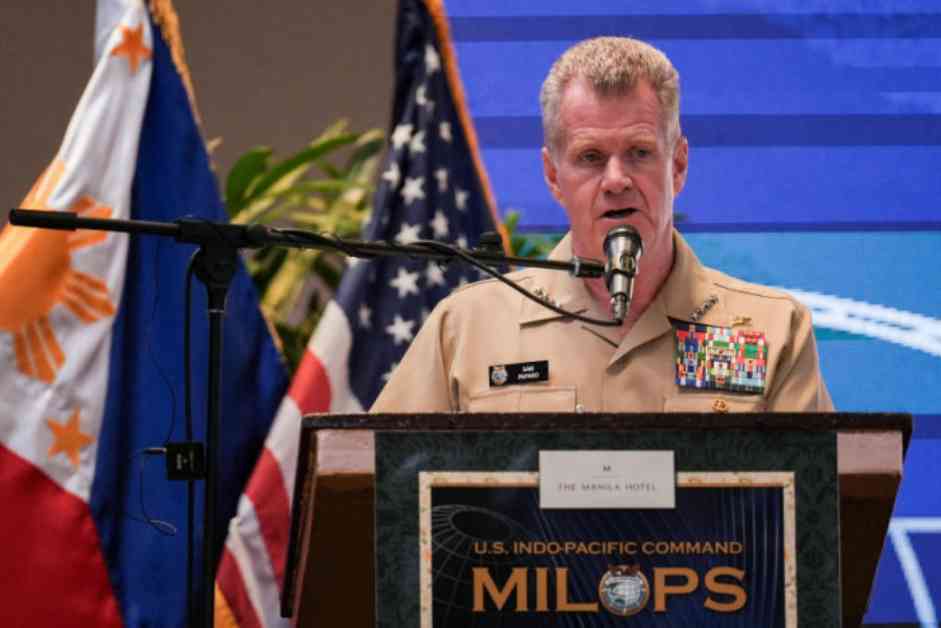The United States Navy is facing significant challenges in the South China Sea as tensions rise with China over disputed territories. With a focus on deterring Iran in the Middle East, the US Navy’s presence in Asia has been notably reduced, leaving allies like the Philippines vulnerable to Chinese aggression. As the US considers its strategy in the region, it is imperative to navigate these challenges effectively.
US Indo-Pacific Command Admiral Samuel Paparo recently addressed the International Military Law and Operations Conference in Manila, highlighting the growing concerns in the region. The Philippines has been facing Chinese interference in accessing disputed territories like the Second Thomas Shoal and Sabina Shoal. Incidents of collisions between Chinese patrol ships and Philippine vessels have escalated tensions in the area.
The US Navy’s response to these challenges is critical in maintaining stability in the South China Sea. With the absence of aircraft carriers in Asia for the first time since 2001, the US is exploring alternative options to support its allies. The possibility of escorting Filipino vessels to resupply disputed shoals has been discussed, signaling a potential escalation in the conflict with China.
Subheadings:
1. The Growing Tensions in the South China Sea
2. US Navy’s Strategic Response to Chinese Aggression
3. The Importance of Alliance Building in Asia
As China continues to assert its dominance in the region, the US faces the dilemma of balancing its commitments in different parts of the world. The Biden administration’s emphasis on defending Taiwan has raised concerns about the US’s ability to effectively respond to provocations in the South China Sea. The need to prioritize resources and alliances in the region has become paramount.
Amidst the ongoing confrontations between China and the Philippines, the US Navy’s role in supporting its allies has come under scrutiny. The lack of a visible presence, such as aircraft carriers, raises questions about the US’s commitment to the region. As China pushes to assert its claims over disputed territories, the US must reassess its strategy and capabilities in the South China Sea.
The US Navy’s response to the Chinese aggression in the South China Sea is crucial in shaping the future dynamics of the region. By strengthening alliances with countries like Japan, South Korea, and Australia, the US can effectively counter China’s influence and protect the interests of its allies. The need for a coordinated and strategic approach to navigate the challenges in the region is more pressing than ever.
In conclusion, the US Navy’s strategy in the South China Sea is a complex and evolving issue that requires careful consideration and planning. As tensions escalate with China, the need for a strong and unified response from the US and its allies is paramount. By leveraging alliances, exploring new tactics, and maintaining a visible presence in the region, the US Navy can effectively navigate the challenges and uphold stability in the South China Sea.




















